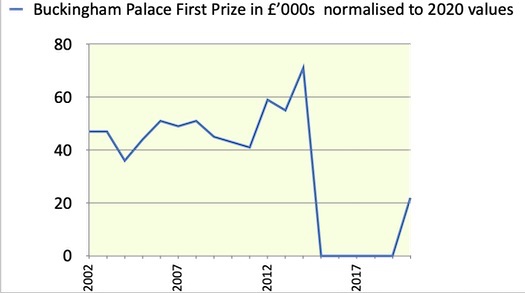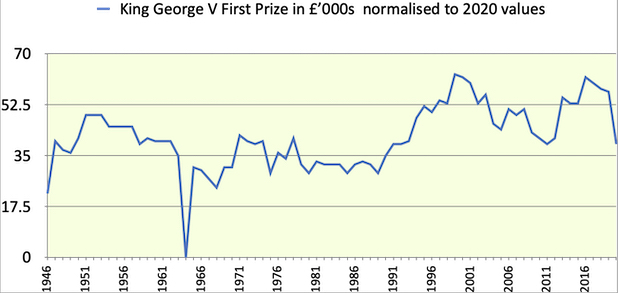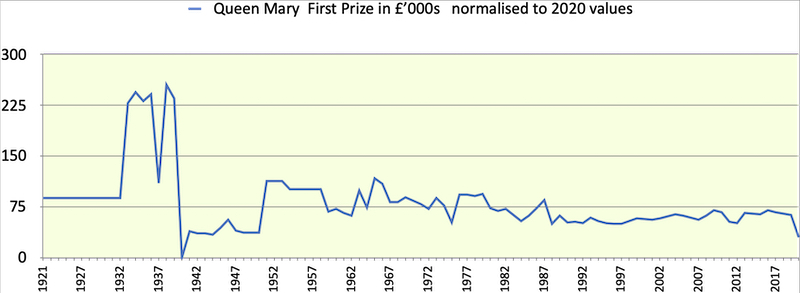It was Queen Anne who first saw the potential for racing at Ascot, which in those days was known as East Cote, while she was out riding from Windsor Castle. The inaugural race meeting took place on Saturday 11th August 1711, opening with Her Majesty’s 100 Guineas Plate. As a mark of respect, when Queen Anne died on Sunday 1st August 1714 the meeting was postponed and racing abandoned for the year. It was to be a further 76 years before a ‘Royal Enclosure’ was established in 1790, albeit a temporary stand which was erected during the Royal Meeting, with entrance to the exclusive stand restricted to those invited by King George III. The next year a royal win was celebrated when the Prince of Wales won the Oatlands Stakes with Baronet. The Ascot Gold Cup (all results shown below), over 2 ½ miles, was first run in 1807 when won by Master Jackey, and the first Royal procession, starting from Windsor Castle, was in 1825. On the 16th January 1839 the foundation stone of the new Grand Stand at Ascot was laid, this being between the Royal Stand and the Betting Stand. The new Grandstand would have the capacity to hold some 3,000 spectators and would cost almost £10,000 to build. To raise such funds shares were offered and those subscribing £100 were given a silver pass, this would enable the subscriber to enjoy free entry to the stand for 61 years. However, this privilege was revoked in 1870. Although the first official Royal Ascot summer meeting was held in 1911, the statistics in this section reflect the results from all of the current historical races held at Ascot since 1807, including those which are now held at Royal Ascot but were originally held without a Royal presence at the so called Ascot Heath meetings on the Staurday of the Royal meeting. Therefore there could be small differences between statistics quoted by Royal Ascot purists and those recorded on this site which include all Ascot summer meetings since 1807.
If you have further data or photos which could enhance this section then email johnwslusar@gmail.com
































